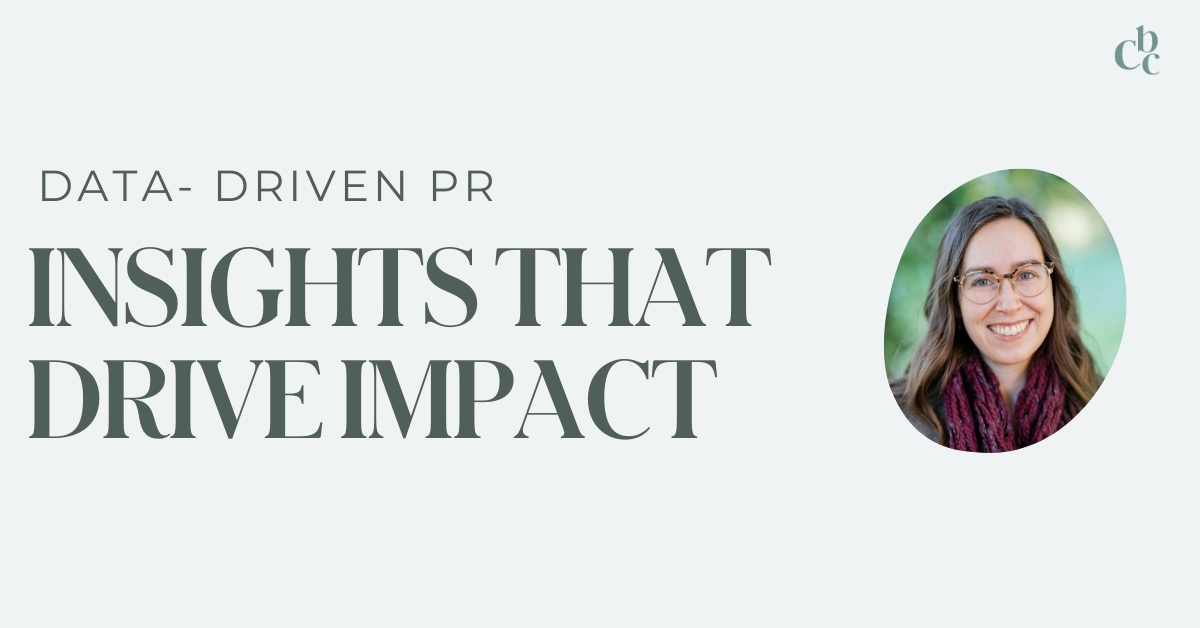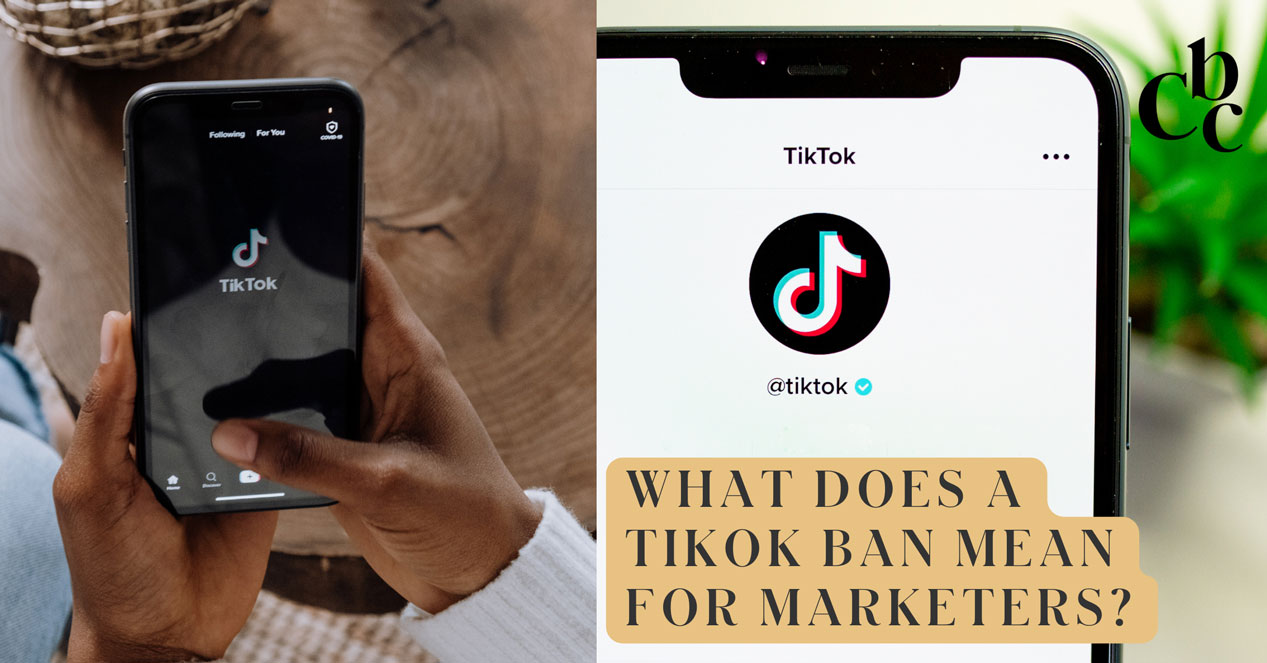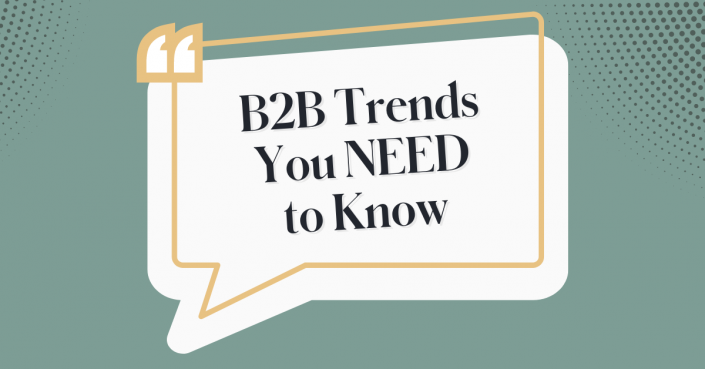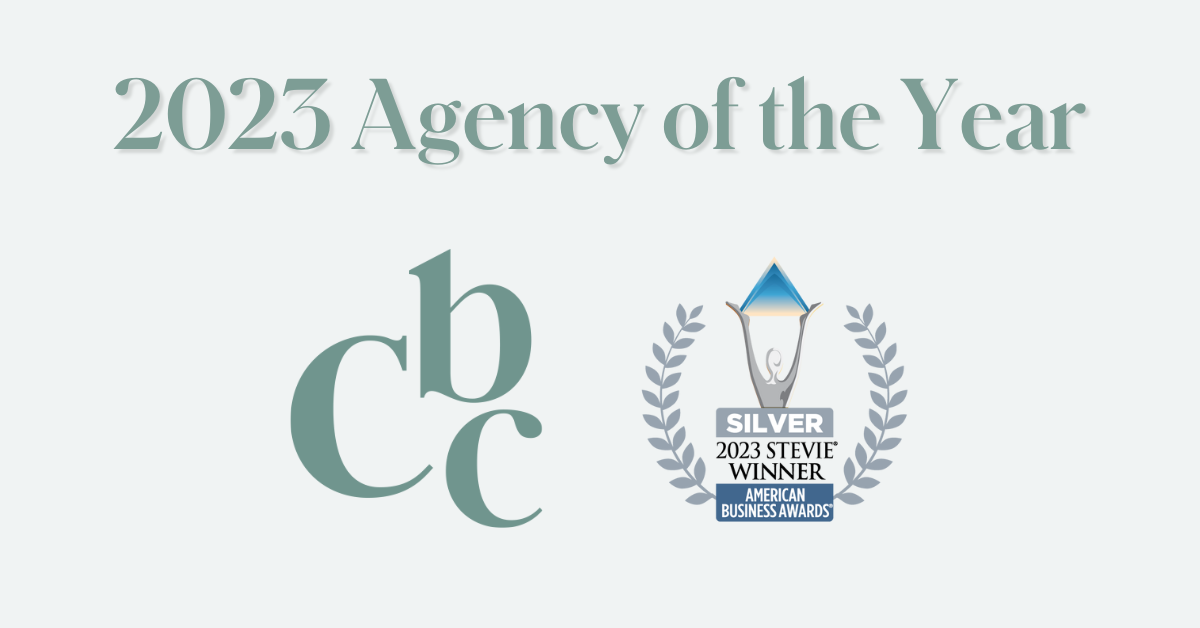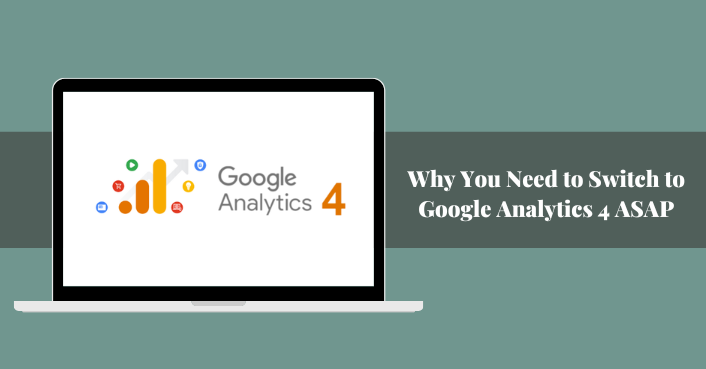Economic downturns are always tough on businesses. With budgeting season approaching and fears of an impending recession on the rise, marketers are left wondering how to handle their marketing budget in this current environment.
Don’t assume that a potential downturn means you need to tighten your pursestrings – with the right marketing strategy in play and a healthy 2023 budget, there are promising opportunities to gain market share and support long-term growth.
Table of Contents
- Should you cut your budget in 2023?
- How should you spend your 2023 marketing budget?
- How should you shift your 2023 marketing strategy?
Should you cut your budget in 2023?
With the gloomy talk of the economy, it seems reasonable to assume there will be a level of austerity in budgets in H1 2023 at least. Although most expect the potential recession to be mild, marketing teams are wondering how conservative of an approach to take.
With the economy expected to be in recession in Q1 and overall shrink by 0.4% for the year, budgets will be down from 2022 (especially year-over-year in H1), but it will not be a dramatic reduction.
In fact, ad marketing spend is forecasted to increase, just at a lower rate of growth than initially expected. AdWeek shared that Dentsu, a global marketing and advertising agency, downgraded its global ad spend forecast from 9.2% annual growth to 8.4%. Looking ahead, Dentsu predicts the 2023 global advertising market will increase by 5.4%, reaching $778.6 billion.
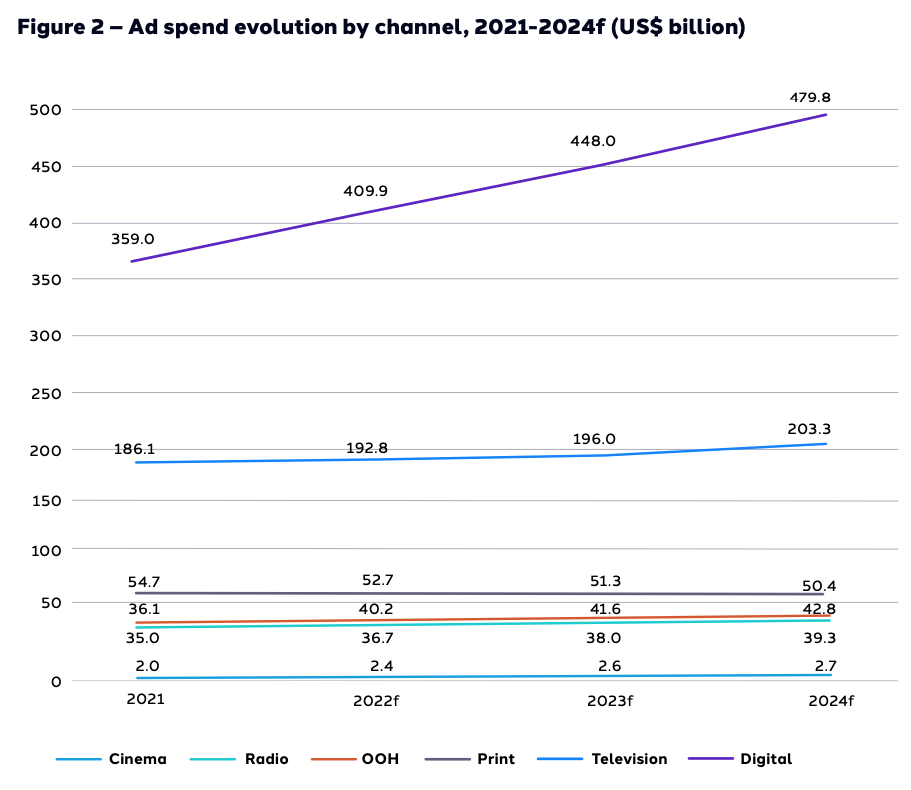
With inflation peaking mid-2022, consumers have begun seeking out more discounts and are willing to switch brands to save a few bucks. Higher-income consumers are not changing their spending habits too much, and now may actually be the ideal time to woo shoppers with deals.
So despite marketers’ concerns about the challenging climate ahead, we recommend not reducing spending below pre-pandemic levels. 2023 will be a key time to build your brand and even wrest market share away from your competitors.
How should you spend your 2023 marketing budget?
Your CFO wants you to justify your investment in marketing… what do you tell them? Greater economic pressures put more pressure on marketers to measure results and prove ROI. Naturally, this leads to more interest in performance marketing channels like digital advertising, paid social, and paid search where it’s easy to calculate the return on your investment.
Performance Marketing
The margin is key to managing an effective budget in this market type. With slimmer margins, marketers may be more inclined to focus on performance marketing and activities that drive immediate ROI (return on investment).
For every dollar spent on an ad campaign, you need to be able to show that you’re making it back – and then some. Typically, a 3:1 ROAS (return on advertising spend) is a baseline, but you may need to be a little more flexible during economic downturns since it’s harder to convince consumers to part with their money.
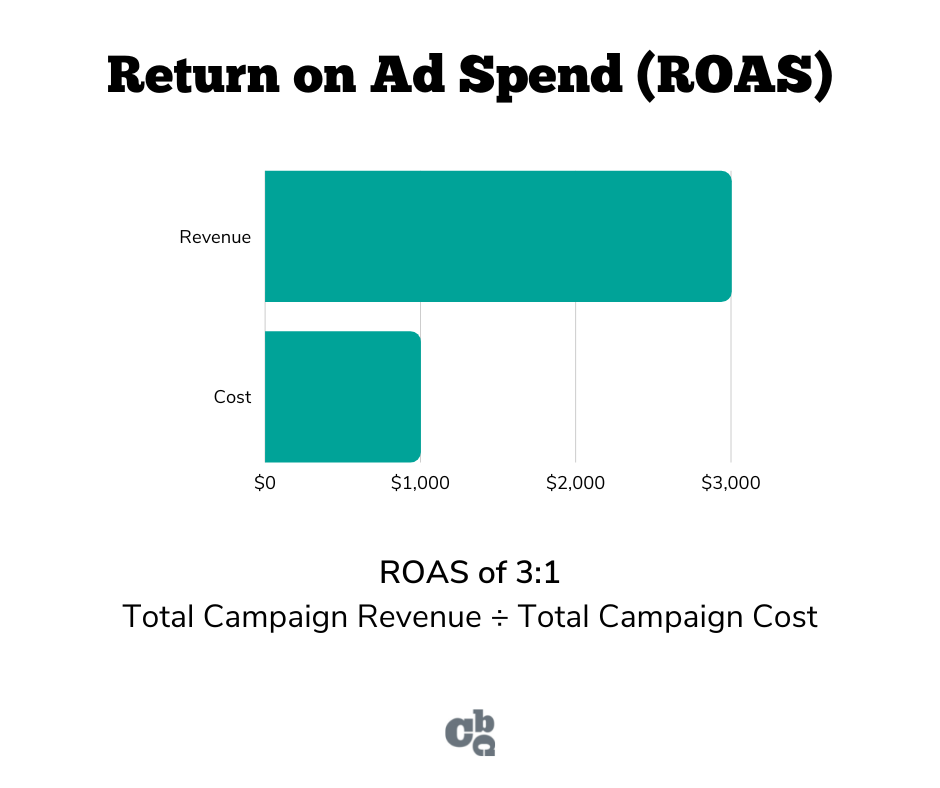
Determine what level of margin is acceptable to you. Can you still make a profit? Can you keep (or even increase) your market share by continuing to run ads?
Instead of pulling back on ad spend during a recession, there are several ways to optimize campaigns to cut costs and use your budget most efficiently.
- Focus on campaigns with a proven track record or on your most popular products.
- Ensure your audience targeting is accurate. With recent privacy updates from Apple and Facebook and the impending threat of a cookie-less future, it’s more important than ever to find ways to reach your ideal audience.
- Diversify your ad spend among multiple channels and monitor your results to be sure you’re spending on the highest performing channels. If you’re used to only advertising on Facebook or Google, now might be the time to explore new channels like TikTok or programmatic TV.
One of the core pillars of any marketing campaign is measurement. However, performance marketing should not be the only piece of the puzzle in a well-rounded marketing strategy.
A Full-Funnel Approach
If you only use bottom-funnel tactics to drive conversions among people who already know you, you will ultimately limit the breadth of impact you can have on your business’s bottom line. This is where “funnel stretchers” come into play…
Top-of-funnel tactics like PR, social media marketing, and influencer marketing are an essential part of a full-funnel marketing strategy. Think of these channels as funnel stretchers. Building awareness among larger audiences helps you get more people into your funnel. With more people in your funnel, you now have more people you can retarget with performance marketing.
Public Relations
PR is the ultimate top-of-funnel marketing technique, with potential reach in the millions or even billions. A skilled media relations team will help you secure not only a high quantity of coverage, but high-quality coverage that gets the right message in front of the right audience. Nothing beats the seal of approval that comes from glowing praise in a relevant, credible outlet!
Traditionally, PR is more difficult to measure than digital marketing campaigns, but with the right PR measurement techniques, you can measure increases in website traffic, engagement, and even revenue.
If you can get people onto your website after reading about you in a PR placement, you can start to move them down the funnel through remarketing. Performance marketing can then take over, nurturing the leads that PR brought to the table.
Influencer Marketing
Influencer marketing is a funnel-building discipline that is on the rise. As of February 2022, the CMO Survey reported that influencer marketing was currently 5.6% of marketing budgets, but would rise to 10.9% by 2025.
With a potential recession now on the horizon, Marketing Brew shares stories of several brands allocating more of their budget into influencer marketing as other forms of media become less stable. Especially if you are able to negotiate longer-term contracts with key influencer partners, you can lock in rates without worrying about the volatility of CPMs (cost per thousand impressions) on ad platforms.
The beauty of influencer marketing is that it allows you to tap into the existing audience base of an influencer, using their brand identity and authority to elevate the perception of your product.

To raise awareness among an even broader audience, you can also use influencers as content creators. Re-using influencer creative as assets for paid social can be incredibly effective. Consumers tend to respond well to the social proof of an influencer testimonial, and the UGC (user-generated content) aesthetic can cut through the noise of overly-polished brand ads.
Thought Leadership
Last but not least, don’t underestimate the potential of organic reach on your owned channels. Third-party recommendations from media and influencers are great when you can get them, but you likely already have your own “influencers” in-house. Leverage the expertise of your brand’s own senior leaders and executives to create authoritative, shareable thought leadership content.
Establish a presence on LinkedIn (or whichever platform your target audience uses) and share content on topics in your niche. Build a following among people who value your expertise and unique point of view, and create content so good that users want to share it with their networks.
Don’t go in expecting the quick hit of conversions from a performance marketing campaign, but sustaining a thought leadership program over time will help you build brand authority and introduce a new pool of high-quality leads into your marketing funnel.
How should you shift your 2023 marketing strategy?
Build Your Brand
An economic downturn can actually be the perfect time to build up your brand while it’s less expensive to do so. This is a prime opportunity to gain market share while your competitors slow down their marketing efforts. With less competition for ads, CPMs (cost per one thousand impressions) will also drop, making it less expensive to get your message out there.
True story: during WW2, the entire firearms industry was making weapons for the war effort. During this time, only Winchester continued to advertise, but did it in a clever way talking about their part in winning the war against the Germans. When the conflict ended and hunters could start up again, Winchester far outpaced any competitor.

More recent examples from previous recessions also show that brands who increased ad spend had more profits than their competitors who stopped advertising. In the 1990-1991 recession, McDonald’s cut its advertising budget, while Pizza Hut and Taco Bell grew theirs. Pizza Hut’s sales increased by 61%, Taco Bell’s increased by 40%, and McDonald’s took a hit of a 28% decrease.
And for brands that stop advertising, it can take 3-5 years of consistent brand building efforts to recover if you “go dark.” If you lose customers to your competitors, consumers may be slow to switch back to your brand even once you resume advertising.
Prioritize Retention
Acquiring new customers may be more challenging if consumers are holding onto their money or saving for a potential rainy day. Focusing on retaining existing customers will be more important if we do see a downturn in 2023.
It’s anywhere from five to 25 times cheaper to retain an existing customer than acquire a new one, so investing in retention is a wise use of your marketing budget.
If you are a membership organization, focus on engaging members. Marketing Generals’ 2022 Membership Marketing Benchmark Report reports that lack of engagement is the top reason for non-renewal of membership. Are current members taking advantage of all you have to offer? Make sure they’re aware of the benefits that you offer, and look for ways to improve the membership experience.

And if you are selling a product, think about ways to get customers coming back again and again. Email marketing automation can help you send reminders to restock after a certain amount of time after purchase. Coupons and sales can also convince your customers to purchase again – and from the brand they know and love, instead of trying out a cheaper competitor.
Provide Value
When the economy hurts, how you advertise to your customer base needs to change as well. Shift your messaging to focus on customers’ current needs and challenges.
Be empathetic to the pains that consumers are feeling. With rising prices everywhere from the gas pump to the supermarket, consumers are forced to re-evaluate their spending priorities. In the same way that marketers had to adapt during the pandemic, we now need to finetune our messages to a changing economic climate.
Above all else, be helpful and show how you can be a solution to your customers’ problems. Your value proposition should make it clear how you can make your customers’ lives better.
Consider testing a “zero-click” marketing strategy where you offer valuable content to users upfront, no click or purchase required. This is a great opportunity to use top-of-funnel marketing channels like social media to showcase your thought leadership and share valuable advice with your audience.
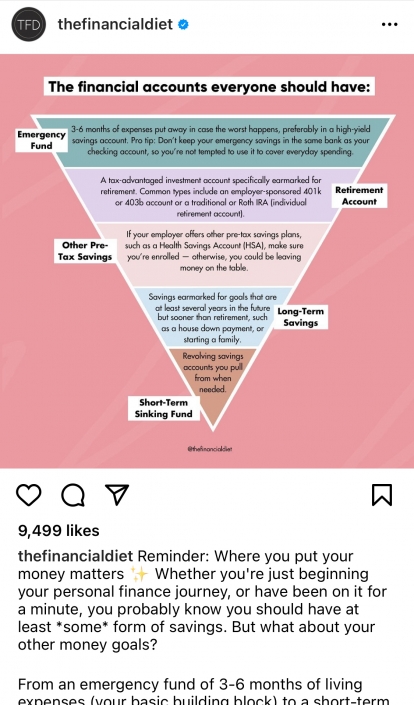
The opposite of clickbait, zero-click content gets your audience’s attention and builds trust – priming them to remember and buy from you when they’re ready. You’ll also see SEO benefits from this approach, given Google’s recent algorithm updates to prioritize human-first, helpful content.
Final Words of Advice
Pessimistic financial forecasts need not be a source of fear for marketers. Have courage to maintain your budget, get smart about how you spend it across the full marketing funnel, and share messaging that resonates in the current moment. If you take this advice, you’ll be set up to outpace your competitors no matter how the economy fluctuates.
Still need help planning for 2023? Reach out to CBC for a free consultation tailored to your business and marketing needs.
About the Author
Megan Paradis is the Manager of Marketing Analytics at Cercone Brown Company, where she works at the intersection of data and strategy to uncover insights that fuel campaigns.


